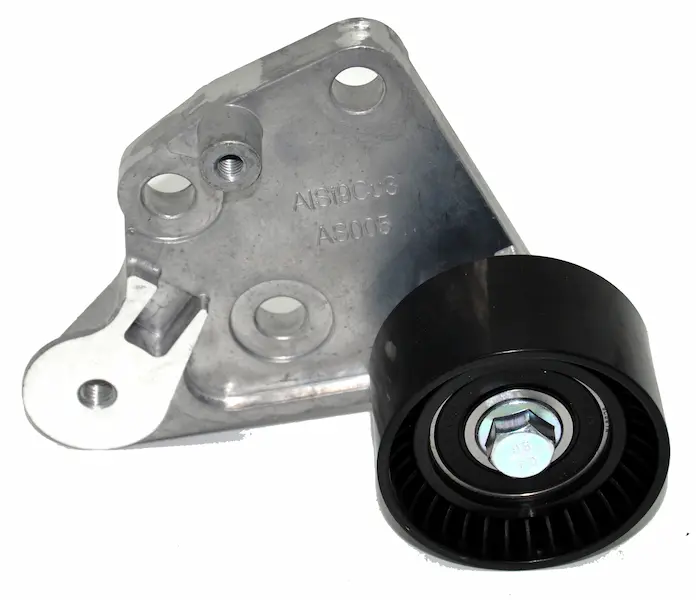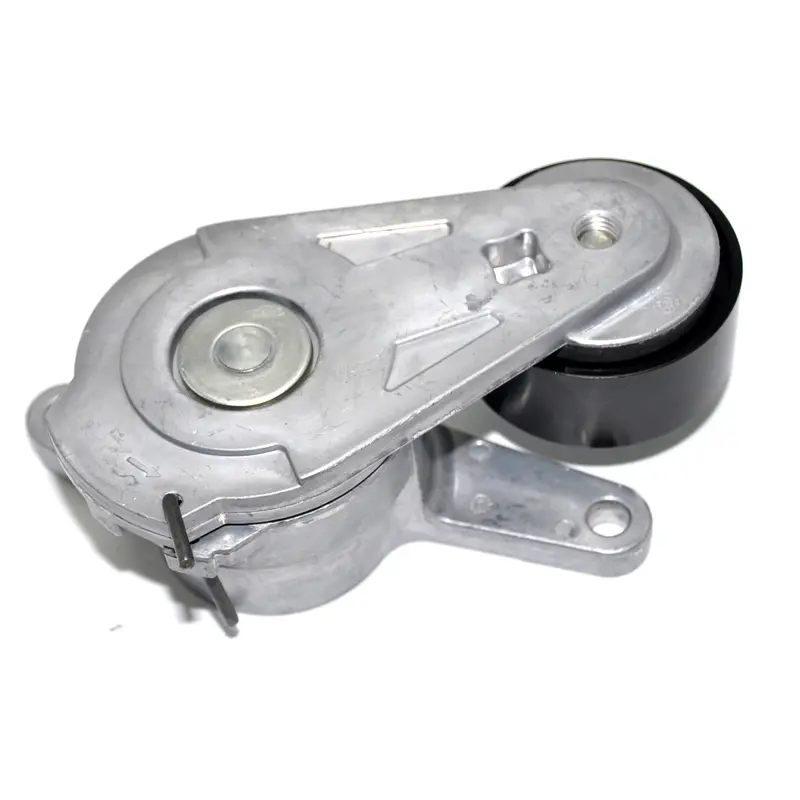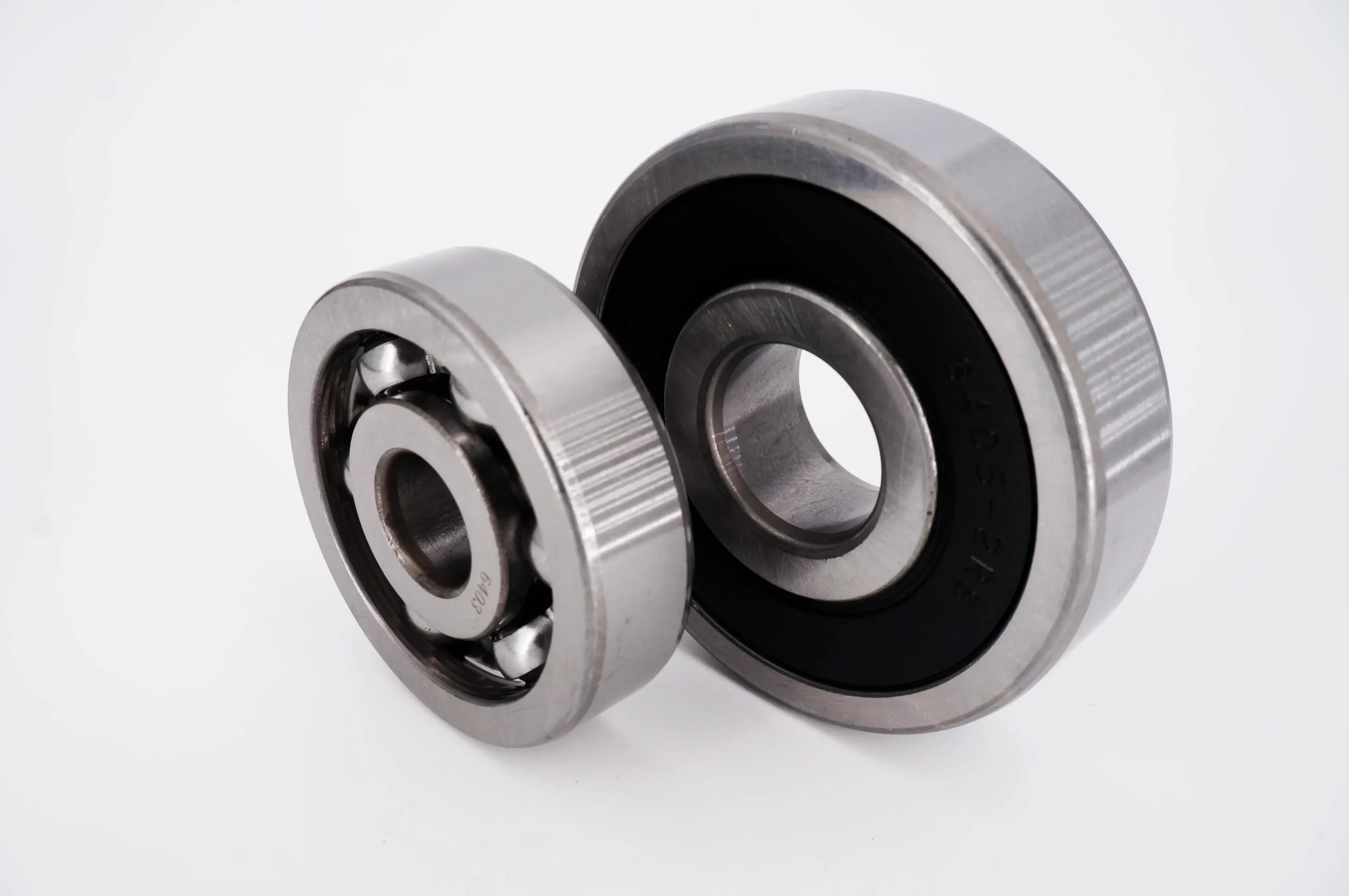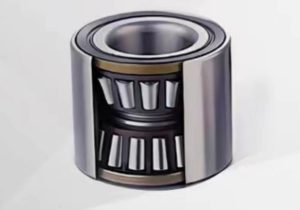Įvadas
Ratų stebulės guoliai DU yra labai svarbūs bet kurios transporto priemonės pakabos sistemos komponentai. Jos padeda sklandžiai suktis ratams, išlaiko transporto priemonės svorį ir atlaiko įvairias jėgas, su kuriomis susiduriama važiuojant, pavyzdžiui, greitėjant, stabdant ir posūkiuose. Specifinis tipas, žinomas kaip ratų stebulės guoliai DU, sukurtas taip, kad būtų labai patvarus ir našus sudėtingomis sąlygomis. Tačiau, kaip ir visoms mechaninėms dalims, šiems guoliams reikia tinkamos priežiūros, kad jų tarnavimo laikas būtų kuo ilgesnis ir užtikrintas jūsų transporto priemonės saugumas bei efektyvumas.
Šiame straipsnyje pateikiamas išsamus vadovas, kaip maksimaliai pailginti ratų stebulės guolių DU tarnavimo laiką. Suprasdami jų funkciją, anksti nustatydami galimas problemas ir laikydamiesi geriausios techninės priežiūros praktikos, galite pailginti guolių tarnavimo laiką, išvengti brangiai kainuojančio remonto ir išlaikyti optimalias automobilio eksploatacines savybes.
Ratų stebulės guolių supratimas DU
Ratų stebulės guoliai DU paprastai projektuojami kaip sandarūs blokai, kuriuose guolis ir stebulė yra vienas komponentas. Šie guoliai atlieka kelias pagrindines funkcijas:
- Transporto priemonės svorio išlaikymas: Ratų stebulės guoliai išlaiko visą transporto priemonės svorį kartu su keleiviais ir kroviniu. Jie sukonstruoti taip, kad atlaikytų vertikaliąsias ir šonines jėgas, atsirandančias važiuojant.
- Sklandaus ratų sukimosi užtikrinimas: Mažindami trintį, šie guoliai leidžia ratams suktis sklandžiai ir efektyviai. Tai labai svarbu norint išlaikyti kontrolę ir užtikrinti patogų važiavimą.
- Derinimo ir stabilumo palaikymas: Tinkamai veikiantys ratų stebulės guoliai padeda išlaikyti ratų geometriją ir transporto priemonės stabilumą, todėl padeda užtikrinti saugų ir nuspėjamą valdymą.
- Apsauga nuo teršalų: Dėl sandarios ratų stebulės guolių DU konstrukcijos į guolio mazgą nepatenka purvas, vanduo ir kiti teršalai, todėl jis ilgiau tarnauja.
Kadangi šie guoliai atlieka itin svarbų vaidmenį, labai svarbu užtikrinti tinkamą jų priežiūrą, kad būtų išvengta ankstyvo gedimo ir pailgintas jų tarnavimo laikas.
Dažniausios ratų stebulės guolio DU gedimo priežastys
Supratimas apie dažniausiai pasitaikančias rato stebulės guolio gedimo priežastis gali padėti imtis prevencinių priemonių. Štai keletas dažniausiai pasitaikančių problemų:
- Užterštumas: Nepaisant sandarios konstrukcijos, ratų stebulės guoliams vis tiek gali pakenkti teršalai, pvz., purvas, vanduo ir kelio druska. Laikui bėgant šie elementai gali prasiskverbti į sandariklį, todėl atsiranda korozija ir guoliai dėvisi.
- Perkrovimas: Viršijus transporto priemonės leistiną svorį, ratų stebulės guoliai gali būti pernelyg apkrauti, todėl greičiau dėvisi ir gali sugesti. Tai ypač dažnai pasitaiko transporto priemonėse, kurios dažnai naudojamos vilkti arba vežti sunkius krovinius.
- Netinkamas montavimas: Netinkamai sumontavus rato stebulės guolius, gali sutrikti jų geometrija, netolygiai pasiskirstyti apkrova ir padidėti trintis, o tai gali sutrumpinti guolio tarnavimo laiką.
- Poveikio žala: Įvažiavus į duobes, bortelius ar kitus pavojingus kelio elementus, gali būti pažeisti rato stebulės guoliai. Net ir nedidelis smūgis gali sukelti įlenkimus ar įtrūkimus guolyje ir pažeisti jo vientisumą.
- Prastas tepimas: Nors ratų stebulės guoliai DU sukurti taip, kad nereikalautų priežiūros, senesni arba nesandarūs guoliai gali būti nepakankamai tepami, todėl padidėja trintis, karštis ir nusidėvėjimas.
- Važiavimo sąlygos: Dažnas važinėjimas nelygiais keliais, atšiaurios oro sąlygos ir agresyvūs vairavimo įpročiai gali prisidėti prie ankstyvo ratų stebulės guolių susidėvėjimo.
Geriausia praktika, kaip maksimaliai pailginti ratų stebulės guolių tarnavimo laiką DU
Kad ratų stebulės guoliai DU tarnautų kuo ilgiau, laikykitės šios geriausios praktikos:
1. Reguliarus tikrinimas ir priežiūra
Įprastiniai patikrinimai yra svarbiausi norint aptikti galimas problemas, kol jos nesukėlė guolių gedimo. Atlikdami reguliarią transporto priemonės techninę priežiūrą, paprašykite profesionalaus mechaniko patikrinti ratų stebulės guolių būklę. Tai apima:
- Neįprastų garsų klausymasis: Iš ratų sklindantis dūzgiantis, šlifavimo ar riaumojimo garsas dažnai yra guolių nusidėvėjimo ar pažeidimo požymis. Ankstyvas jų nustatymas gali užkirsti kelią rimtesnėms problemoms.
- Ratų laisvumo tikrinimas: Patikrinimo metu mechanikas patikrina, ar nėra per didelio ratų laisvumo ar judėjimo. Tai gali reikšti, kad guoliai susidėvėję ir juos reikia keisti.
- Vizuali apžiūra: Vizualiai apžiūrint galima aptikti rūdžių, korozijos ar kitų guolio mazgo pažeidimų požymių. Nors sandari ratų stebulės guolių DU konstrukcija sumažina tokių problemų tikimybę, vis tiek svarbu patikrinti.
2. Venkite perkrauti transporto priemonę
Laikykitės gamintojo rekomenduojamos transporto priemonės krovumo normos. Dėl per didelės apkrovos ratų stebulės guoliai patiria papildomą apkrovą, todėl greičiau dėvisi ir gali sugesti. Jei dažnai vežate sunkius krovinius arba velkate priekabas, apsvarstykite galimybę investuoti į guolius, pritaikytus didesnei apkrovai.
3. Važiuokite atsargiai
Jūsų vairavimo įpročiai turi didelę įtaką rato stebulės guolių eksploatavimo trukmei. Norėdami sumažinti nusidėvėjimą:
- Venkite atsitrenkti į duobes: Jei įmanoma, stenkitės išvengti duobių ir pavojų kelyje. Jei negalite jų išvengti, sulėtinkite greitį, kad sumažintumėte poveikį savo guoliams.
- Švelniai užimkite kampus: Agresyviai važiuojant posūkiuose rato stebulės guoliai veikiami papildomų šoninių jėgų, todėl greičiau dėvisi. Važiuodami posūkiuose sulėtinkite greitį, kad sumažintumėte guoliams tenkančią apkrovą.
- Sklandžiai stabdykite: Staigus stabdymas padidina ratų stebulės guolių apkrovą. Išlaikykite saugų atstumą, kad nereikėtų staigiai stabdyti.
4. Užtikrinkite tinkamą įrengimą
Jei reikia pakeisti rato stebulės guolius, įsitikinkite, kad juos tinkamai sumontavo kvalifikuotas specialistas. Tinkamas montavimas apima:
- Tinkamų įrankių naudojimas: Norint sumontuoti rato stebulės guolius jų nepažeidžiant, dažnai reikia specialių įrankių. Profesionalus mechanikas turės reikiamą įrangą, kad tinkamai atliktų šį darbą.
- Toliau pateikiamos sukimo momento specifikacijos: Ratų stebulės guoliai turi būti sumontuoti tinkamu sukimo momentu. Dėl per didelio arba per mažo sukimo momento gali sutrikti sukibimas, atsirasti per didelė trintis ir priešlaikinis nusidėvėjimas.
- Tinkamas guolių išlyginimas: Norint užtikrinti tolygų apkrovos pasiskirstymą ir sklandų veikimą, labai svarbu tinkamai išlyginti. Dėl neteisingo išlyginimo guolis gali netolygiai susidėvėti ir sutrumpėti jo tarnavimo laikas.
5. Naudokite aukštos kokybės guolius
Kai ateina laikas keisti rato stebulės guolius DU, visada rinkitės aukštos kokybės komponentus, atitinkančius arba viršijančius gamintojo specifikacijas. Nors pigesni guoliai iš pradžių gali padėti sutaupyti pinigų, jie dažnai nėra tokie patvarūs ir tikslūs kaip aukštesnės kokybės variantai, todėl juos tenka dažniau keisti ir patirti didesnes bendras išlaidas.
6. Apsauga nuo užteršimo
Nors ratų stebulės guoliai DU sukurti taip, kad būtų sandarūs ir nereikalautų priežiūros, galite imtis papildomų priemonių, kad apsaugotumėte juos nuo užteršimo:
- Reguliariai plaukite savo transporto priemonę: Reguliarus plovimas padeda pašalinti purvą, kelio druską ir kitus teršalus, kurie gali pažeisti ratų stebulės guolius.
- Venkite važiuoti per gilų vandenį: Važiuojant per gilų vandenį į guolio mazgą gali prasiskverbti vanduo, todėl jis gali pradėti koroduoti ir dėvėtis. Jei turite važiuoti per vandenį, darykite tai lėtai, o po to patikrinkite guolius.
7. Stebėkite ankstyvuosius įspėjamuosius požymius
Atkreipkite dėmesį į bet kokius automobilio valdymo, triukšmo ar eksploatacinių savybių pokyčius. Ankstyvieji įspėjamieji ratų stebulės guolio problemų požymiai yra šie:
- Vairo vibracija: Jei jaučiate vairo vibraciją, tai gali būti susidėvėjusių arba pažeistų rato stebulės guolių požymis.
- Traukimas į vieną pusę: Jei transporto priemonė traukia į vieną pusę, gali būti, kad sugedo rato stebulės guolis. Tai gali lemti ir kitos problemos, todėl svarbu, kad jį patikrintų specialistas.
- Netolygus padangų nusidėvėjimas: Netolygus padangų nusidėvėjimas gali būti ženklas, kad dėl sugedusio rato stebulės guolio sutrinka geometrija. Reguliariai tikrinkite padangas, ar nėra netolygaus nusidėvėjimo požymių, ir nedelsdami pašalinkite pagrindinę priežastį.
Išvada
Kad ratų stebulės guoliai DU tarnautų kuo ilgiau, reikia derinti reguliarią techninę priežiūrą, atidų vairavimą ir greitą dėmesį į galimas problemas. Laikydamiesi šiame vadove pateiktos geriausios praktikos, galite pailginti savo guolių tarnavimo laiką, sumažinti netikėtų gedimų riziką ir išlaikyti savo automobilio saugumą bei eksploatacines savybes.
Investicijos į aukštos kokybės guolius, tinkamas montavimas ir apsauga nuo užteršimo yra pagrindiniai žingsniai siekiant ilgalaikio ilgaamžiškumo. Atminkite, kad nors ratų stebulės guoliai DU sukurti taip, kad atlaikytų sudėtingas sąlygas, jų ilgaamžiškumas galiausiai priklauso nuo to, kaip gerai jie prižiūrimi ir tvarkomi. Tinkamai elgdamiesi galite užtikrinti, kad jūsų transporto priemonė veiktų sklandžiai, ir išvengti brangiai kainuojančio remonto, susijusio su guolių gedimu.




